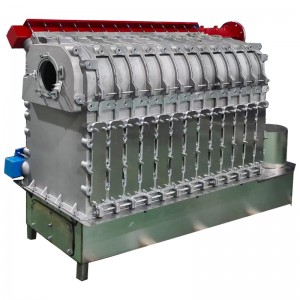- Afrikaans
- Albanian
- Amharic
- Arabic
- Armenian
- Azerbaijani
- Basque
- Belarusian
- Bengali
- Bosnian
- Bulgarian
- Catalan
- Cebuano
- China
- China (Taiwan)
- Corsican
- Croatian
- Czech
- Danish
- Dutch
- English
- Esperanto
- Estonian
- Finnish
- French
- Frisian
- Galician
- Georgian
- German
- Greek
- Gujarati
- Haitian Creole
- hausa
- hawaiian
- Hebrew
- Hindi
- Miao
- Hungarian
- Icelandic
- igbo
- Indonesian
- irish
- Italian
- Japanese
- Javanese
- Kannada
- kazakh
- Khmer
- Rwandese
- Korean
- Kurdish
- Kyrgyz
- Lao
- Latin
- Latvian
- Lithuanian
- Luxembourgish
- Macedonian
- Malgashi
- Malay
- Malayalam
- Maltese
- Maori
- Marathi
- Mongolian
- Myanmar
- Nepali
- Norwegian
- Norwegian
- Occitan
- Pashto
- Persian
- Polish
- Portuguese
- Punjabi
- Romanian
- Russian
- Samoan
- Scottish Gaelic
- Serbian
- Sesotho
- Shona
- Sindhi
- Sinhala
- Slovak
- Slovenian
- Somali
- Spanish
- Sundanese
- Swahili
- Swedish
- Tagalog
- Tajik
- Tamil
- Tatar
- Telugu
- Thai
- Turkish
- Turkmen
- Ukrainian
- Urdu
- Uighur
- Uzbek
- Vietnamese
- Welsh
- Bantu
- Yiddish
- Yoruba
- Zulu
అక్టో . 09, 2024 01:22 Back to list
Design and Analysis of Single Phase Heat Exchanger for Efficient Thermal Management
Single Phase Heat Exchanger An Overview
Heat exchangers play a critical role in various industrial applications, from energy production to HVAC systems, offering efficient methods for transferring heat between two fluids. Among the different types of heat exchangers, single-phase heat exchangers are widely used due to their simplicity and effectiveness in many scenarios where phase change is not involved.
A single-phase heat exchanger typically facilitates the transfer of heat between two liquids or gases that remain in the same phase throughout the process. This type of heat exchanger operates under the principles of conduction, convection, and sometimes radiation, depending on the configuration and design of the exchanger. The primary objective is to efficiently transfer thermal energy from one fluid to another, either for heating or cooling purposes.
Single Phase Heat Exchanger An Overview
On the other hand, plate heat exchangers are made up of numerous thin, corrugated plates that create channels for the fluids to flow. The arrangement allows for a larger surface area for heat transfer while maintaining a compact design. Plate heat exchangers are particularly advantageous for applications requiring efficient heat transfer with minimal space, such as food processing and refrigeration systems.
single phase heat exchanger

The efficiency of a single-phase heat exchanger is heavily influenced by several factors, including flow arrangement, temperature difference between the fluids, and surface area for heat transfer. The two primary flow arrangements are counterflow and parallel flow. In counterflow heat exchangers, the two fluids move in opposite directions, which allows for a higher temperature gradient and greater heat transfer efficiency. Conversely, in parallel flow arrangements, both fluids move in the same direction, which can reduce the overall heat transfer effectiveness.
Proper design and selection of materials are crucial to ensure that a single-phase heat exchanger performs efficiently and reliably. Factors such as fluid properties (temperature, viscosity, and specific heat), potential fouling tendencies, and operating pressures need to be meticulously considered. In many cases, the use of computational fluid dynamics (CFD) simulations assists engineers in visualizing fluid flow patterns and optimizing designs for enhanced performance.
In addition to industrial processes, single-phase heat exchangers are also essential in domestic applications. For example, they are used in water heaters, swimming pool heaters, and even in refrigeration systems, ensuring comfortable living environments while optimizing energy use.
In conclusion, single-phase heat exchangers are vital components in both industrial and commercial systems, allowing for efficient thermal management across various applications. By understanding the principles of operation, design configurations, and performance optimization, engineers can select and implement the best heat exchanger solutions to meet diverse heating and cooling needs, ultimately contributing to enhanced sustainability and energy efficiency.
-
8mm Thin-Walled Cast Steel Manhole Cover Pallet Bottom Ring | Durable
NewsAug.04,2025
-
Premium Cast Iron Water Main Pipe: Durable, Corrosion-Resistant
NewsAug.03,2025
-
Durable Cast Iron Water Mains | AI-Optimized Systems
NewsAug.02,2025
-
High-Efficiency Propane Boiler for Baseboard Heat | Save Energy
NewsAug.01,2025
-
Premium Source Suppliers for Various Gray Iron Castings
NewsJul.31,2025
-
Durable Cast Iron Water Main Pipes | Long-Lasting
NewsJul.31,2025


